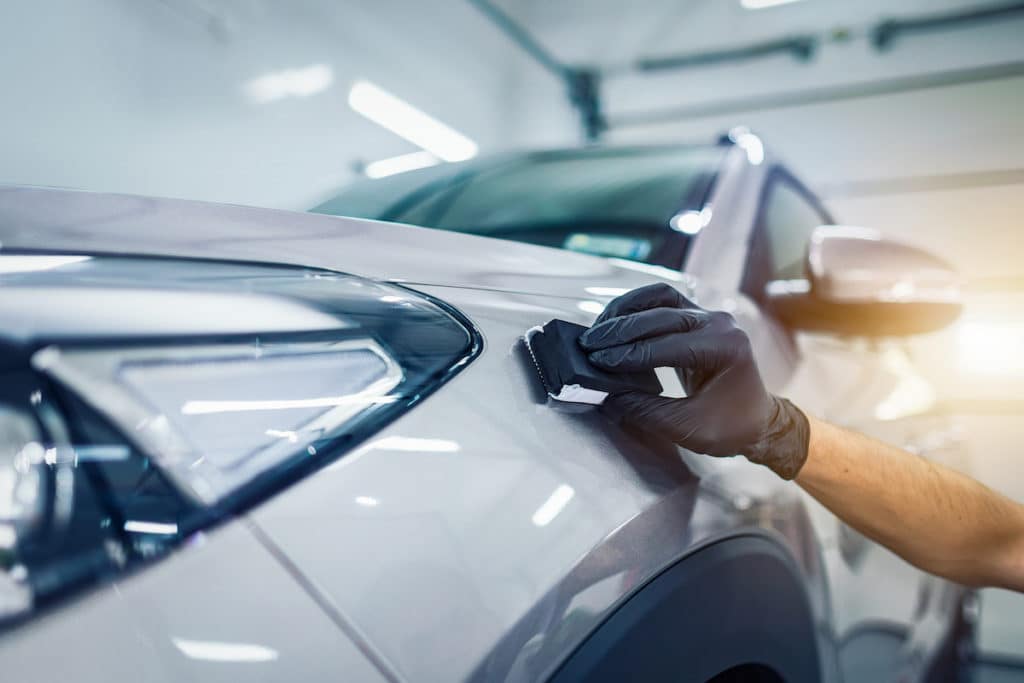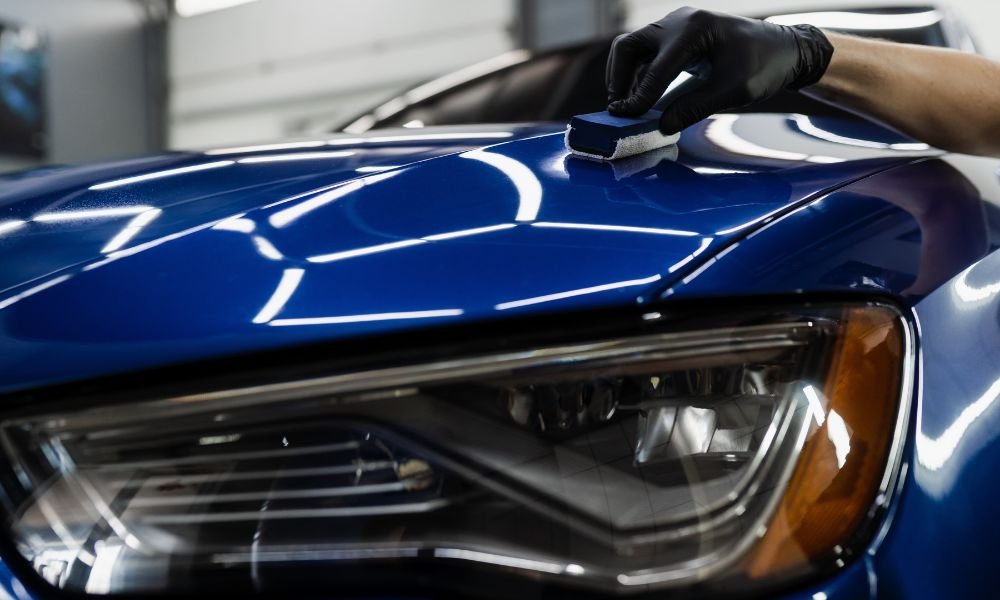Why Ceramic Coating Philadelphia Is the Best Selection for Costs Paint Protection
Why Ceramic Coating Philadelphia Is the Best Selection for Costs Paint Protection
Blog Article
Why Ceramic Finishing Is the Ultimate Service for a Remarkable Finish
Ceramic layer has arised as a leading remedy for those looking for a remarkable coating for their vehicles, many thanks to its exceptional resilience and protective functions. What factors really established ceramic coating apart?
What Is Ceramic Coating?

When used correctly, ceramic layer develops a hydrophobic surface that fends off water and dirt, making it less complicated to clean and preserve. Unlike standard waxes or sealants, which commonly offer brief defense, ceramic layers can last for a number of years, relying on the item top quality and application method. The procedure of applying ceramic finishing needs precise prep work, consisting of comprehensive cleansing and occasionally paint correction, to guarantee optimum bonding and performance.
Ceramic finishes are not restricted to vehicle surface areas; they can also be used on different products, consisting of glass, steel, and plastics, providing a flexible solution for improving defense. In general, ceramic layer represents a substantial advancement in surface area protection technology, combining both useful and visual advantages for a wide variety of applications.
Benefits of Ceramic Coating
While many surface protection alternatives exist, the advantages of ceramic finish stand out due to its unique residential or commercial properties and resilient performance. Among the key benefits is its phenomenal longevity. Ceramic Coating Philadelphia. Unlike typical wax or sealers that call for regular reapplication, ceramic finishes offer a resilient layer that can last for several years, dramatically lowering maintenance efforts
One more remarkable advantage is improved protection against ecological pollutants. Ceramic layers produce a hydrophobic surface that fends off water, dust, and different contaminants, making it easier to cleanse. This function not just protects the automobile's appearance but likewise decreases the risk of corrosion and oxidation, specifically in severe climate condition.
Moreover, ceramic layers use exceptional resistance to UV rays, preventing fading and degradation of paint gradually. This UV protection is critical for keeping the visual value of surface areas and lorries revealed to route sunlight.
Furthermore, the shiny coating accomplished with ceramic coating improves the overall aesthetic appeal, providing surface areas a showroom-quality luster. In general, ceramic layers represent a considerable innovation in surface security technology, providing enduring benefits that deal with both functional and visual needs.
How It Functions
Recognizing the science behind ceramic layers discloses just how they supply such remarkable protection and longevity. At its core, a ceramic covering is a fluid polymer that chemically bonds with the automobile's manufacturing facility paint.
The application process involves several actions, consisting of surface area prep work, which is important to attaining optimum bond. Once used, the finish goes through a healing procedure, throughout which it sets and creates a semi-permanent bond with the paint surface area. This bond is what identifies ceramic finishings from conventional waxes and sealants, providing a longer-lasting protective obstacle that can sustain for many years.
In addition, the thickness of the covering can boost its safety high qualities, guaranteeing that it can stand up to severe conditions. Inevitably, the scientific research of ceramic coatings incorporates sophisticated products with cutting-edge application techniques to deliver an unparalleled level of security and aesthetic enhancement for automobiles.
Contrast With Conventional Approaches
When contrasted to conventional paint defense techniques such as waxes and sealers,The advantages of ceramic coatings come to be especially noticeable. While waxes provide a short-lived sparkle, normally lasting a couple of weeks to a couple of months, ceramic layers offer a lasting protective layer that can sustain for several years. This sturdiness dramatically lowers the regularity of reapplication, making ceramic layers a more economical service in time.
Furthermore, traditional methods frequently need comprehensive preparation and several applications to attain an adequate level of defense. In comparison, ceramic finishings bond at a molecular degree with the car's surface, producing a robust shield versus environmental contaminants like UV rays, acid rainfall, and roadway salts. This bond enhances the car's resistance to scrapes and swirl marks, which are widespread with typical waxes and sealers.
Moreover, the hydrophobic residential or commercial properties of ceramic finishings fend off water and dirt, causing simpler cleansing and maintenance. In contrast, wax and sealant-treated surface areas can bring in gunk, requiring more frequent washing - Ceramic Coating Philadelphia. Overall, ceramic finishes not only provide superior defense yet also provide a more enduring and visually attractive finish, developing them as the favored option for discerning automobile owners
Application and Upkeep Tips

Using a foam applicator, apply the covering in little sections, adhering to the maker's guidelines relating to thickness and overlap. Allow enough curing time between coats, commonly 24 hr, to make sure correct bonding. After application, it is critical to avoid direct exposure to water or harsh go aspects for a minimum of a week to allow the finishing to totally heal.
For upkeep, clean the automobile routinely with pH-balanced soaps and avoid rough products. Touchless car laundries are advised to reduce scraping. In addition, utilizing a ceramic maintenance spray can improve the finish's hydrophobic residential or commercial properties and longevity. Normal assessments for any kind of indicators of wear will certainly aid maintain the covering's stability and maintain that excellent finish.
Conclusion
In conclusion, ceramic layer becomes an exceptional choice for attaining a remarkable auto surface. Its remarkable resilience, protective top qualities, and hydrophobic residential or commercial properties considerably boost the lorry's look while streamlining maintenance efforts. By creating a robust bond with manufacturing facility paint, ceramic finish efficiently shields versus scratches, UV rays, and ecological pollutants. her explanation With a life-span expanding several years, this advanced remedy not only maintains but also elevates the general aesthetic allure of lorries, making it an affordable investment for car fanatics.

Report this page